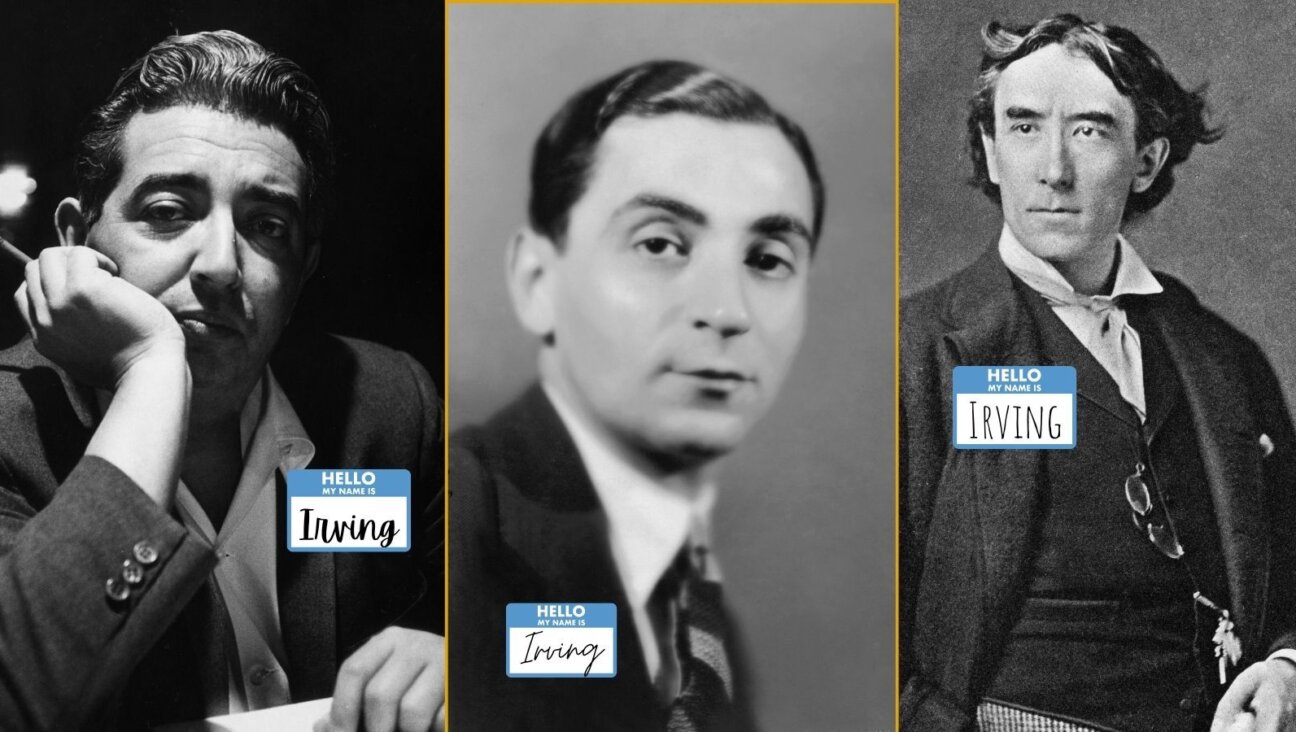Bogie Speaks Yiddish!
One never knows where one will find a Jewish linguistic question answered. It can even be in an old Humphrey Bogart movie.
The movie I was watching on TV the other night was “The Big Sleep,” starring Bogart and Lauren Bacall. Made in 1946, it was directed by Howard Hawks and its highly entertaining screenplay has the distinction of having been adapted from a Raymond Chandler novel by an even better-known American writer — William Faulkner. In it, Bogart plays detective Philip Marlowe, who is asked by wealthy and retired invalid General Sternwood to deal with the attempted blackmail of his dissolute young daughter, Carmen. Asked by her at their first meeting what he does, Bogart replies: “I’m a shamus” — and when Carmen is mystified, he explains: “A private eye.”
I’ve often wondered about the derivation of “shamus.” Some dictionaries say it is the Yiddish word shammes, from the Hebrew shamash, meaning a synagogue beadle, while others point to the Irish name Séamus or present both possibilities. In favor of Séamus is the fact that shamus is commonly pronounced “SHAY-mus,” like the Irish name. The Yiddish word, on the other hand, is pronounced “SHAH-mus.” There are dictionaries that give both “shaymus” and “shahmus” and dictionaries that give only “shaymus.”
Humphrey Bogart, however, tells Carmen Sternwood, “I’m a shamus” – and the word occurs twice more in “The Big Sleep” with the Yiddish rather than the Irish pronunciation. Since Faulkner, Hawks and Bogart all were non-Jews, one can’t suspect them of favoring “shahmes” for that reason. Apparently, then, in the mid-1940s this was the way that — if you knew the word at all — you said it, even though the spelling of “shamus” would incline you to say it the Irish way.
This makes it quite likely that the Yiddish derivation of “shamus” is the correct one. But why would a Yiddish word for a synagogue beadle become American slang for a detective?
Two Yiddish sayings provide the answer to this question. One goes, ikh ken dem shammes un der shammes ken di gantze shtot, “I know the shammes and the shammes knows the whole town.” In his collection of proverbs, “Yiddishe Shprikhverter,” the folklorist Ignacy Bernstein explains that this comes from a story about a Jew who, in this manner, answered a stranger wanting to know if he was acquainted with a certain person in his town. It was enough, said the Jew, to know the shammes, because the shammes knew everyone else.
The second saying in Bernstein’s collection is Der shammes shteyt oybn on, “The shammes stands above everything.” This is a play on words, since Hebrew shamash, besides meaning a beadle or minor functionary, designates the Hanukkah candle that, not itself one of the eight lit on the eight nights of the holiday, is used to light the others. In Hanukkah menorahs this candle is placed above the others, even though it is ritually less important — and so, Bernstein writes, the saying is a jocular reference to “the synagogue whose leading Jews are not actively involved in the running of it, leaving the shammes as its most influential person.” This is akin to the well-known maxim that if you are looking for useful connections in a business, don’t befriend the boss — befriend his secretary.
The shammes in an Eastern European synagogue indeed had to know everyone in town. To begin with, he had to know where everyone lived, since it was his job, in the month of selikhes (the middle-of-the-night penitential prayers before the High Holy Days), to knock on each Jew’s door and rouse him for the service. And it was his job to know each Jew’s name and father’s name so that he might be called up correctly to the Torah; to know who was getting married, had given birth, was ill, or had recovered from an illness or escaped danger, so that the appropriate blessing might be made for him or her; and even to know what each family’s economic situation was so that he might advise the synagogue’s parnosim, its officials, how big an annual contribution to expect.
The shammes was in a sense the “private eye” of the shtetl: If you wanted to know something about somebody, he was the logical person to ask. It was natural, therefore, for Jewish immigrants to America, encountering professional sleuths for the first time, to jokingly call them that, and from there the word spread to non-Jews. And why did the pronunciation of “shay-mus” eventually triumph? Perhaps, indeed, because of the spelling. Perhaps, too, because the Irish, who made up a high percentage of the police force in large American cities like New York and therefore dealt all the time with detectives, associated shamus with Séamus. This is the logical conclusion of Harold Wentworth and Stuart Berg Flexner’s 1960 Dictionary of American Slang, which observes that the “most common” pronunciation of shamus “rhymes with Thomas but that the Irish of New York City pronounce it ‘shay-mus.’” In the end, the Irish won out. “The Big Sleep,” though, is evidence that the Jews were there first.














